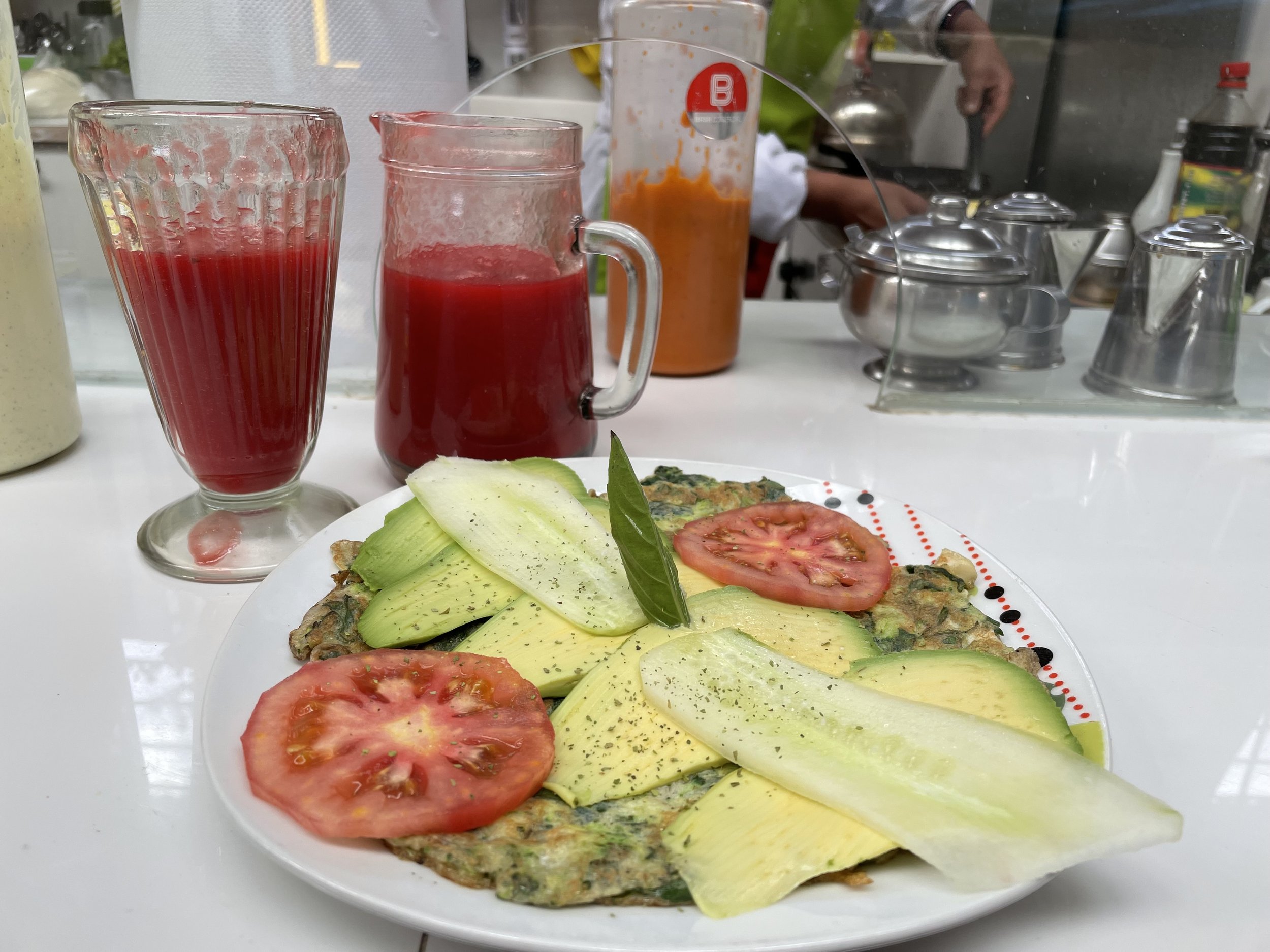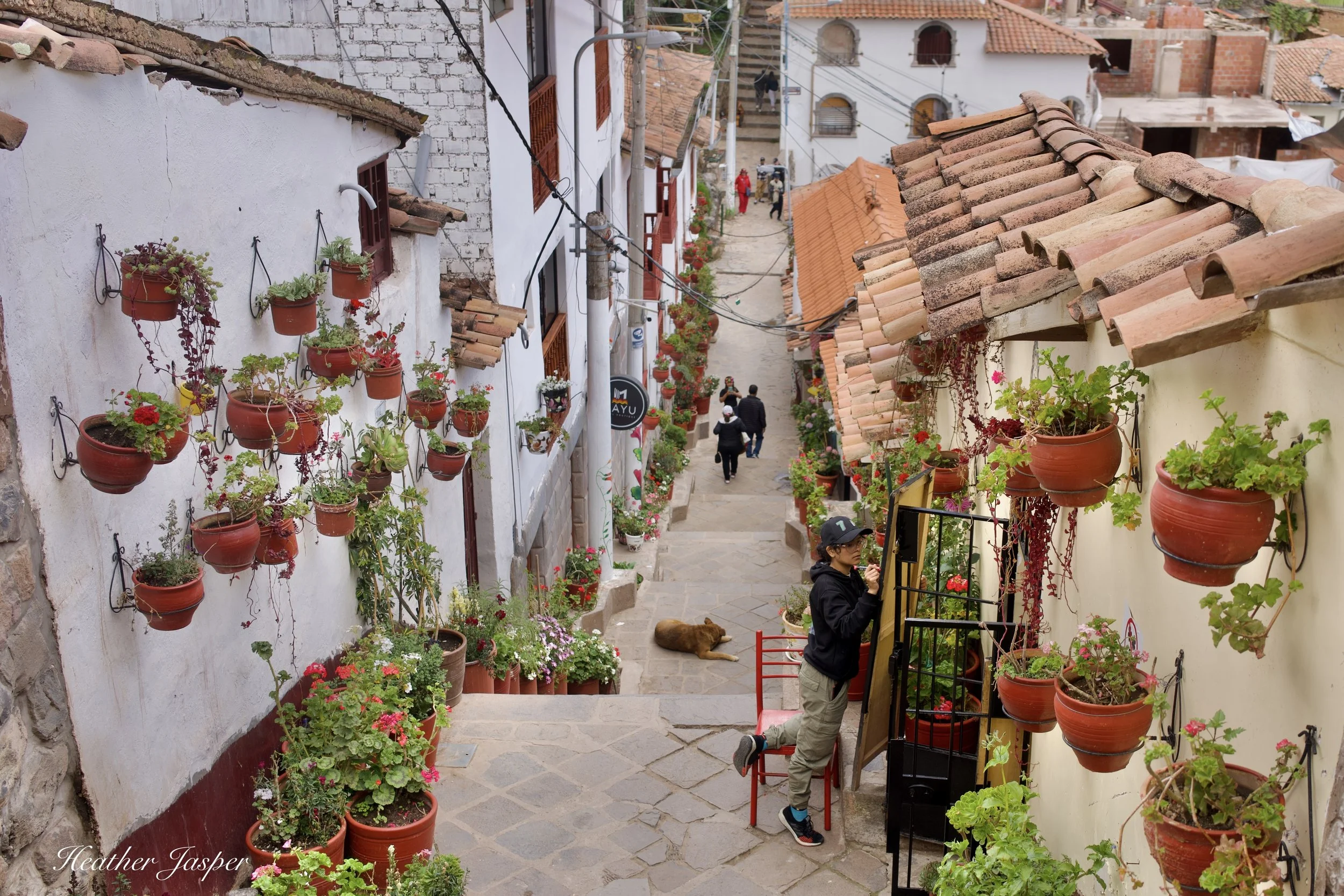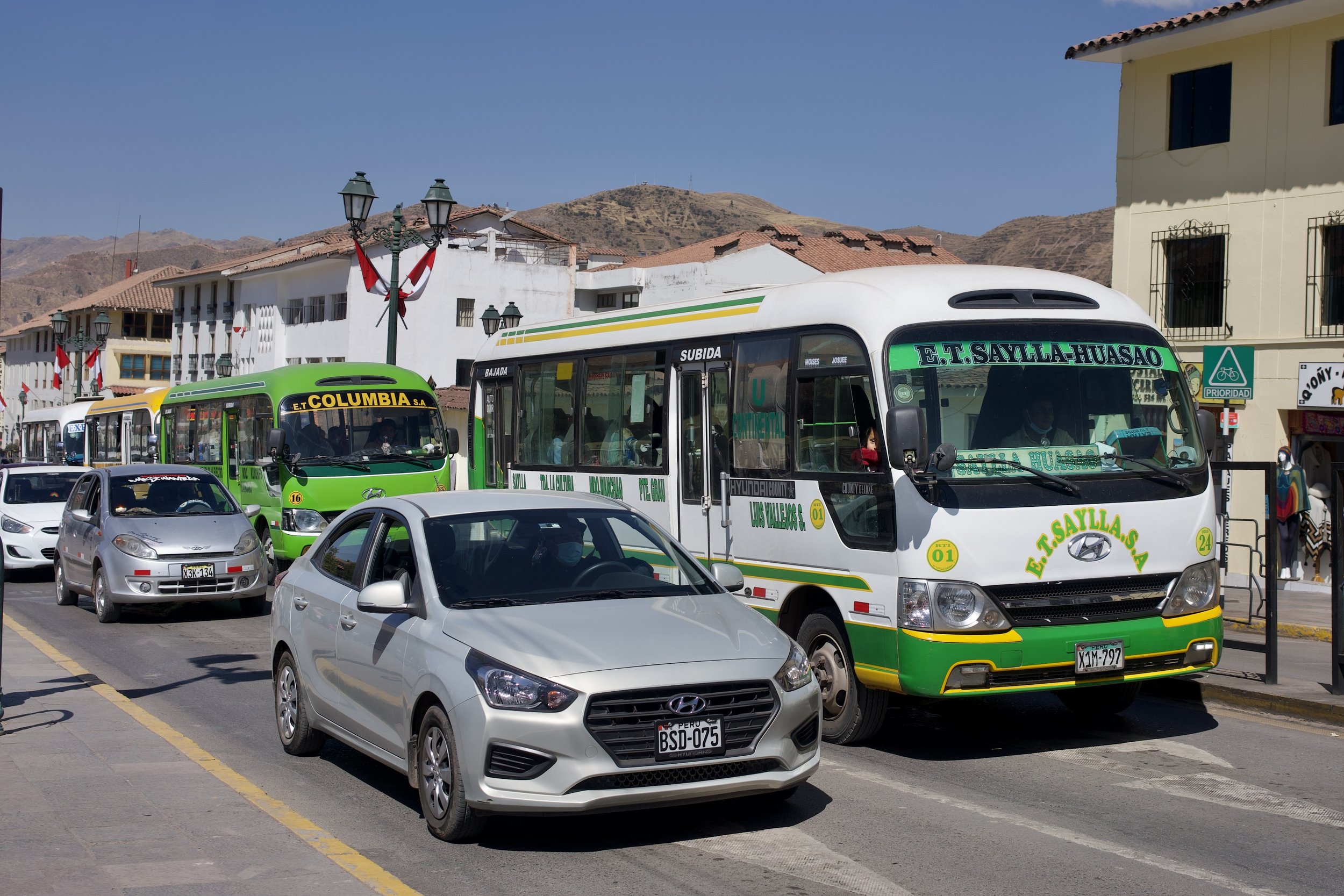Cusco Travel Tips
The ancient Inca Capital is Peru’s new Tourism Capital
Cusco's Plaza de Armas has a colonial Spanish and cathedral, and monolithic stones left from destroyed Inca buildings.
After five years in Cusco, I have a lot of recommendations and tips.
In this blog:
· The Boleto Turístico del Cusco
· Best archeological sites in Cusco
· How to deal with altitude in Cusco
· Shopping and souvenirs in Cusco
· My favorite walking routes in Cusco
If you feel like splurging on a fancy hotel, check the Monasterio, a Belmond Hotel.
Where to stay in Cusco
If you want to be in the most photogenic neighborhood with lots of restaurants and bars, go for San Blas. If you want a quiet neighborhood close to the center, I suggest Lucrepata, which is right next to San Blas. I haven’t stayed in a hotel in Cusco since March 2019, so I don’t have specific hotel recommendations. You can check my partnerships page to see which hotels I’ve worked with as a photographer and writer.
I recommend booking hotels either directly on their website or with Booking.com because they take a smaller commission than AirBnb and more places use Booking here. If you use my link for Booking I may get a small commission at no extra cost to you.
Where to eat in Cusco
Most of my favorite restaurants are in San Blas and around the Plaza de Armas. I’ll admit that my restaurant reviews on this page are mostly from a year or two ago, but they’re all still open and all still places I go often. I just haven’t changed them recently because they’re still my favorites.
The Boleto Turístico del Cusco
This “tourist ticket” is what you’ll need to visit government-owned museums and archeological sites. You can buy it at any site that requires it but they only accept cash. You can buy the full ticket for sixteen places for s/130 or the half ticket that covers either Cusco or the Sacred Valley for s/70. The sites you’ll need it for in Cusco are the popular Sacsayhuamán, Q’enqo, Tambomachay, and Puka Pukará. There is no ticket for just one individual archeological site or museum.
Best museums in Cusco
Of my favorite museums, only the Regional Historical Museum is included in the Boleto Turístico. My other top to recommendations are private museums and the Qorikancha, which is owned by the Catholic Church. The museum with the best presentation, exhibits and explanations is the Pre-Columbian Art Museum. The museum with the best artifacts is the Museo Inka, which unfortunately doesn’t have good signs to explain what you’re looking at. If you go to the Museo Inka, I recommend hiring a guide at the door.
The Casa Concha is the only museum with artifacts found at Machu Picchu, most of which were taken to Yale University in the 1910s by Hiram Bingham and returned to Peru in the 2010s. You can see everything in about an hour and is well worth the time.
Best archeological sites in Cusco
You need the Boleto Turístico for these sites. Most people sign up for a “city tour” which doesn’t actually tour the city of Cusco but rather takes you to the four main archeological sites in the hills above the city: Sacsayhuamán (pronounced sack-sigh-wah-mon), Q’enqo, Puka Pukará and Tambomachay. You can do all of them on your own, without a tour, by either taxi or public bus (Huerto goes all the way to Tambomachay, the farthest site).
If you have time for only one, go to Sacsayhuamán and get a guide at the entrance. Talk to the guide for a bit before you hire them to test their language skills and ask how long they’ve been working there. You don’t want to hire somebody only to realize that their English is so basic that they can’t answer any of your questions.
If you’re going to skip one of these four sites, skip Puka Pukará. It’s a nice spot but doesn’t have much to see besides a fantastic view looking south across the Cusco valley.
My favorite site that’s not on the tourist trail is Inkilltambo, which is free but requires a bit of a hike to get there. For more info on archeological sites, check out my article 10 Best Free Inca Sites in Cusco.
There are a lot of stairs in Cusco, so take it easy till you acclimate to the altitude.
How to deal with altitude in Cusco
This is the question that I get more than any other: How do I acclimatize to the altitude in Cusco?
Cusco is at about 11,000 feet above sea level (3,500m), depending on where you are in town. Take it easy the first couple days, especially if you’re coming directly from sea level. Walk slowly, drink lots of water and rest whenever you feel like it. Get plenty of sleep and minimize alcohol intake. Many people will tell you to drink coca leaf tea for headaches but I find that a combination if ibuprofen and caffeine works better. If you want that caffeine in the form of delicious local coffee, check out Café d’Wasi and Xapiri Ground.
Many people have trouble sleeping the first night. If you wake up feeling like you can’t breathe, put an extra pillow behind you and sleep half sitting up. Sleeping at an angle makes gravity pull your internal organs down and gives your lungs more space to work. When you’re laying flat your organs push up a bit on your lungs, making it harder to breathe.
If your lips or fingernails turn blue, go to a clinic for oxygen. You can also buy oxygen in any pharmacy or bótica. It comes in a green cannister and the brand they sell here is OxyShot. This would be very rare, but blue skin is a sign of emergency and must be treated asap. Always have travel insurance before you come to Peru.
Shopping and souvenirs in Cusco
Another very common question I get about Cusco is where to buy baby alpaca sweaters. If you want to be sure that what you’re buying is actual baby alpaca fur, you have to buy in a reputable shop. Women on the street selling sweaters for s/40 soles (about $10) are selling acrylic sweaters. If the sweater costs about ten times that, you’re probably buying 100% baby alpaca or a blend with a high quantity of baby alpaca.
Side note: Baby alpaca fur is what you get the first time an alpaca is sheared. It’s softer, just like puppy fur or baby human hair. It’s significantly more expensive since it’s more rare and a higher quality than adult alpaca fur.
My favorite shops for baby alpaca sweaters and other knits are HJK Studio and Coco Liso, both in the San Blas neighborhood. They’re both locally owned and HJK works with local women who handknit all the shop’s products in their own homes on their own time. You can also buy alpaca yarn at HJK to do your own knitting.
Shopping at markets
If you’re in Cusco on a Saturday, go to the Saturday market in the Plaza Túpac Amaro, about a 20 minute walk from the Plaza de Armas. The stalls around the outside of the market are mostly food and plants but the center stalls rotate between rural communities in the Cusco region and are the best place to buy souvenirs directly from the people who make them. Another great Saturday market is in the Plazoleta San Blas.
The most famous market in Cusco is San Pedro, both for the number of stalls that sell souvenirs and the local foods that you’ll see Cusqueñians shopping for. San Pedro has a metal roof designed by Gustave Eiffel in gratitude for how much he loved Cusco.
There are many artisan markets throughout the city and the two easiest to find from the Plaza de Armas are on the east corner of Plazoleta Regocijo and the south side of the Plaza San Francisco. They all have the same mix of sweaters (mostly acrylic), ponchos (mostly sheep’s wool), jewelry, little toy llamas and assorted standard souvenirs like magnets and hats.
My favorite walking routes in Cusco
Even before you fully acclimatize to the altitude, Cusco is a beautiful city for a walk. Keep your walks short and slow the first couple days, then set off to explore every part of the historic center and San Blas.
In order above: 1. The easy walk for your first day at altitude. 2. Avenida del Sol Route. 3. San Pedro Market Route. 4. San Blas Route.
Practical tips for travelers in Cusco
Use MultiRed ATMs. The first thing you’ll probably need is cash since most places in Cusco still don’t accept credit cards. The MultiRed ATMs are part of Peru’s Banco de la Nación and don’t charge fees, though they generally have lower limits on how much you can withdraw per day than other banks. (Your bank at home may still charge fees, so check before you travel).
Bring a water bottle with a filter. Not even Cusqueñians drink the tap water without boiling it. I have a filter at home but most people in Cusco boil their water rather than filtering it because filters are expensive. It’s safe to buy drinks like chicha morada, even on the street, because they’re always boiled and then cooled.
Reduce your plastic consumption. There is no recycling facility in Cusco so please limit how many plastic bags you use and how many drinks you buy in plastic bottles. Recycling bins are just sorting trash for reuse, not actual recycling.
Agree on a price before you get in a taxi. Cusqueñians always lean in the passenger window to ask the taxi driver how much they charge to your destination, and you should do the same. Most taxi drivers know the popular hotels and restaurants in town but don’t expect them to understand a map on your phone. Around the historic center s/5 or s/6 soles is standard and a trip to the airport costs about s/10.
Take the Imperial bus from the airport to the center. Imperial’s route ends on Ruinas in front of the Marriott and only a block from the Plaza de Armas. The bus’s name is in giant green capital letters across the top of the windshield. Busses cost s/1 sol until 10pm and then s/1.50 until midnight or so.
Police wear dayglo jackets and on the back it says Policia or Policia de Turismo.
How to deal with emergencies in Cusco
There police force called Policia de Turismo to protect tourists, but don’t expect them to speak English. They wear dayglo green jackets that say policia on the back and their job is to help tourists. If you need to make a police report about an incident, go to the police station on the Plaza Túpac Amaru. To get there in a taxi, tell the taxi driver “comisaría de policía de turismo,” which shouldn’t cost more than s/6 from anywhere in the historic center.
There are several clinics that have English speaking staff 24/7. Make sure you have travel insurance before you arrive in Peru. I use SafetyWing and if you buy insurance from them with my link I may get a small commission at no extra cost to you. I’ve only been to a couple clinics in Cusco but the best experience I had was at Clínica Pardo on Avenida de la Cultura.
Call 105 for police and 116 for the fire department. Call the tourism police at 084 235 123.
































